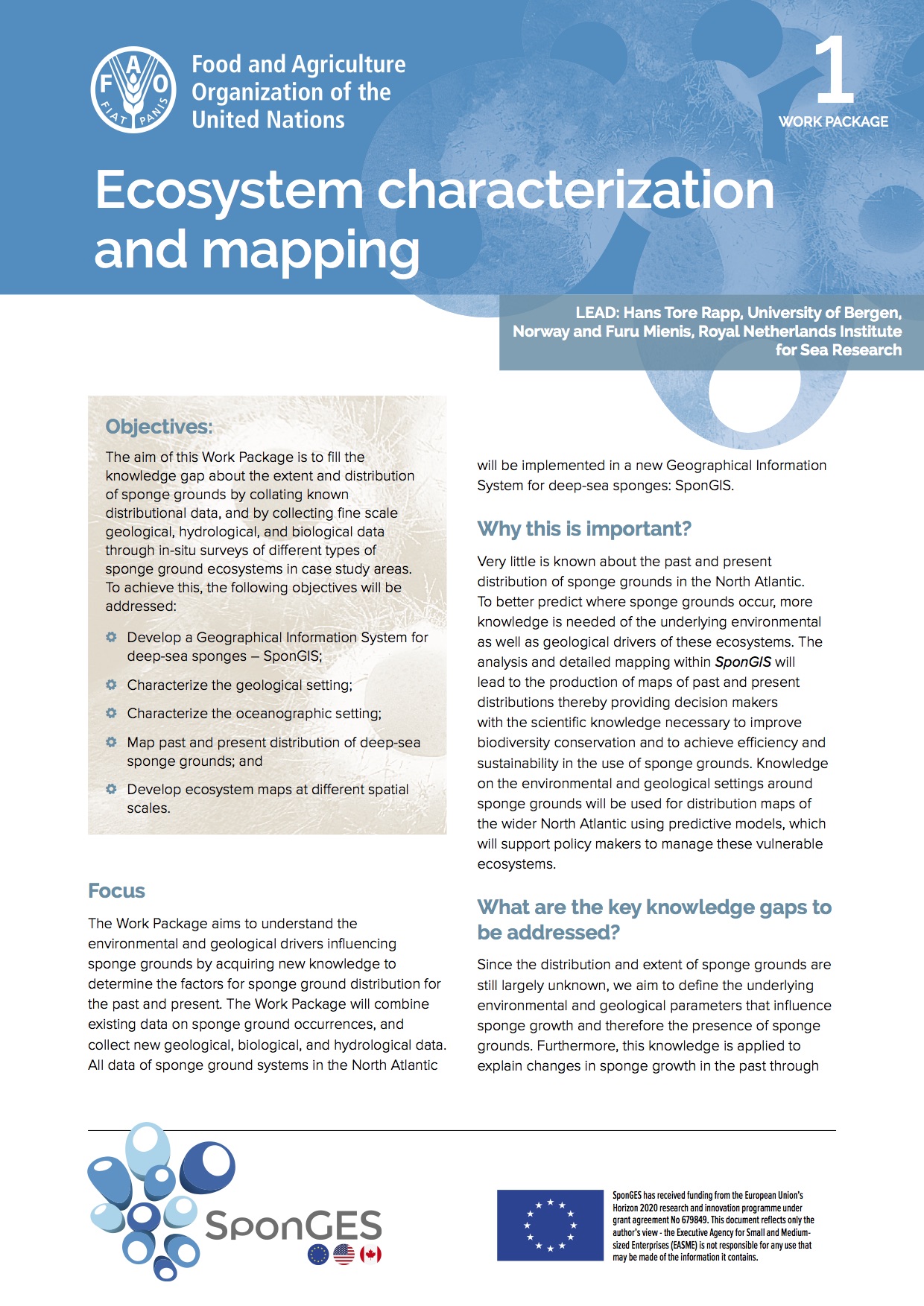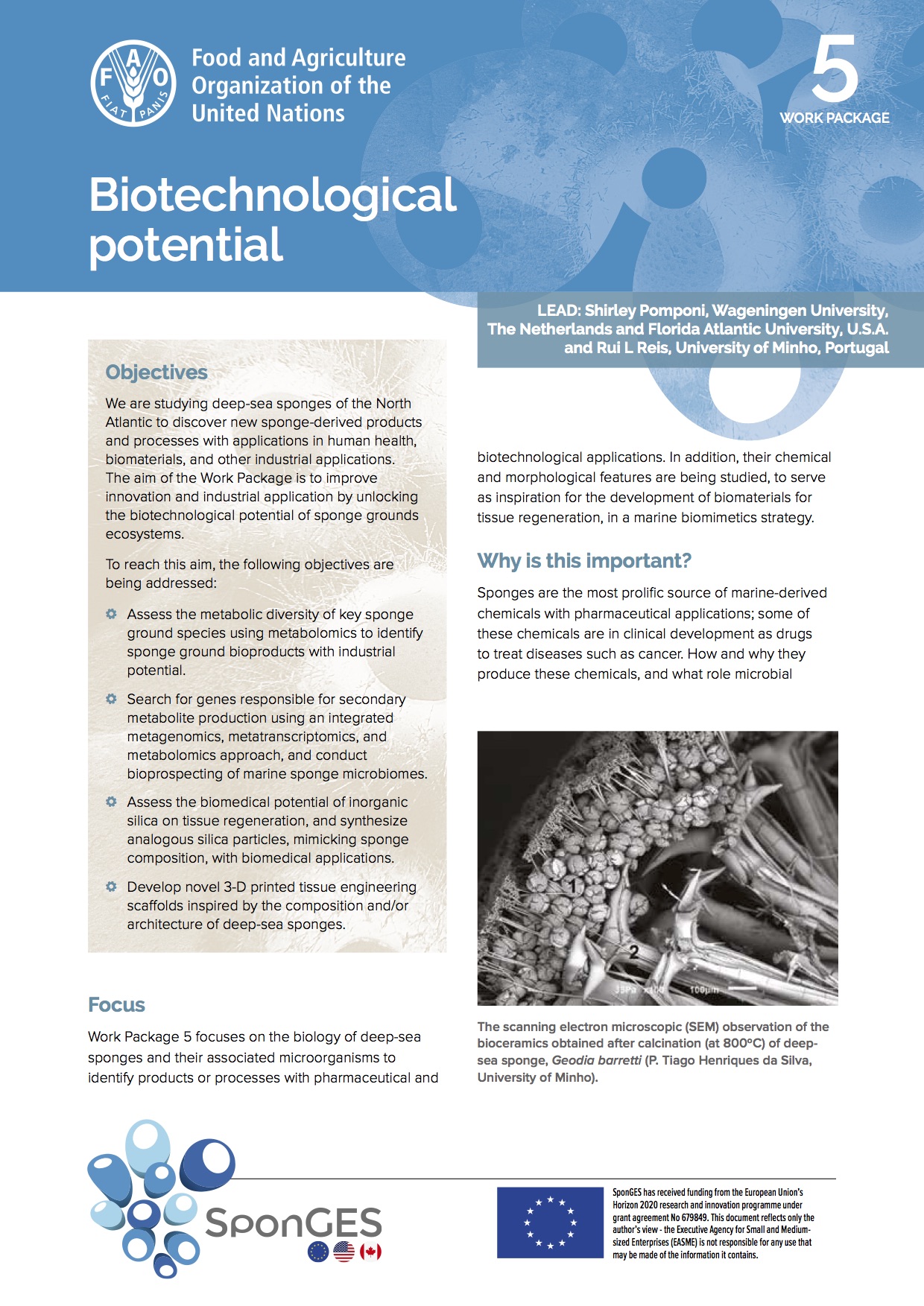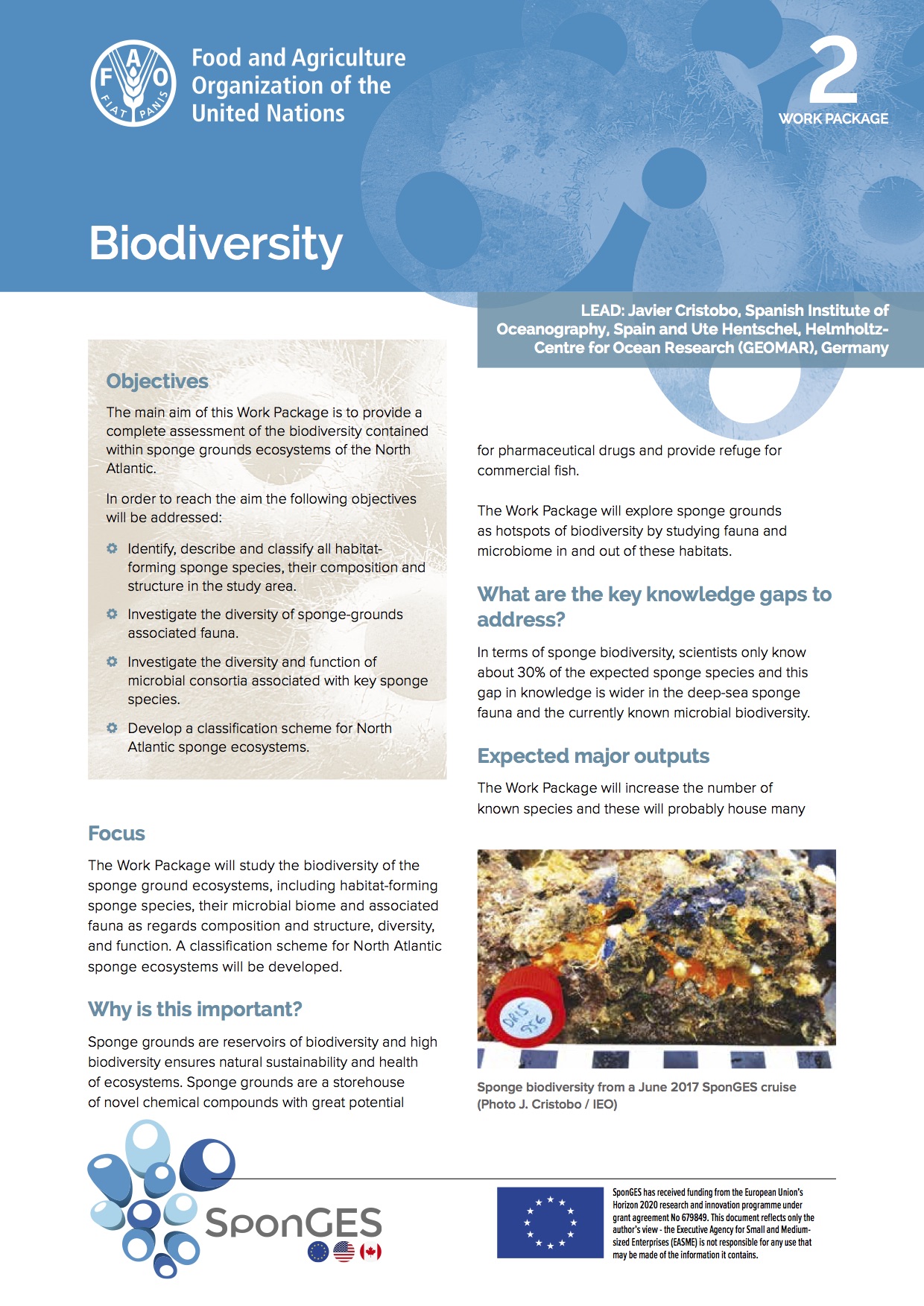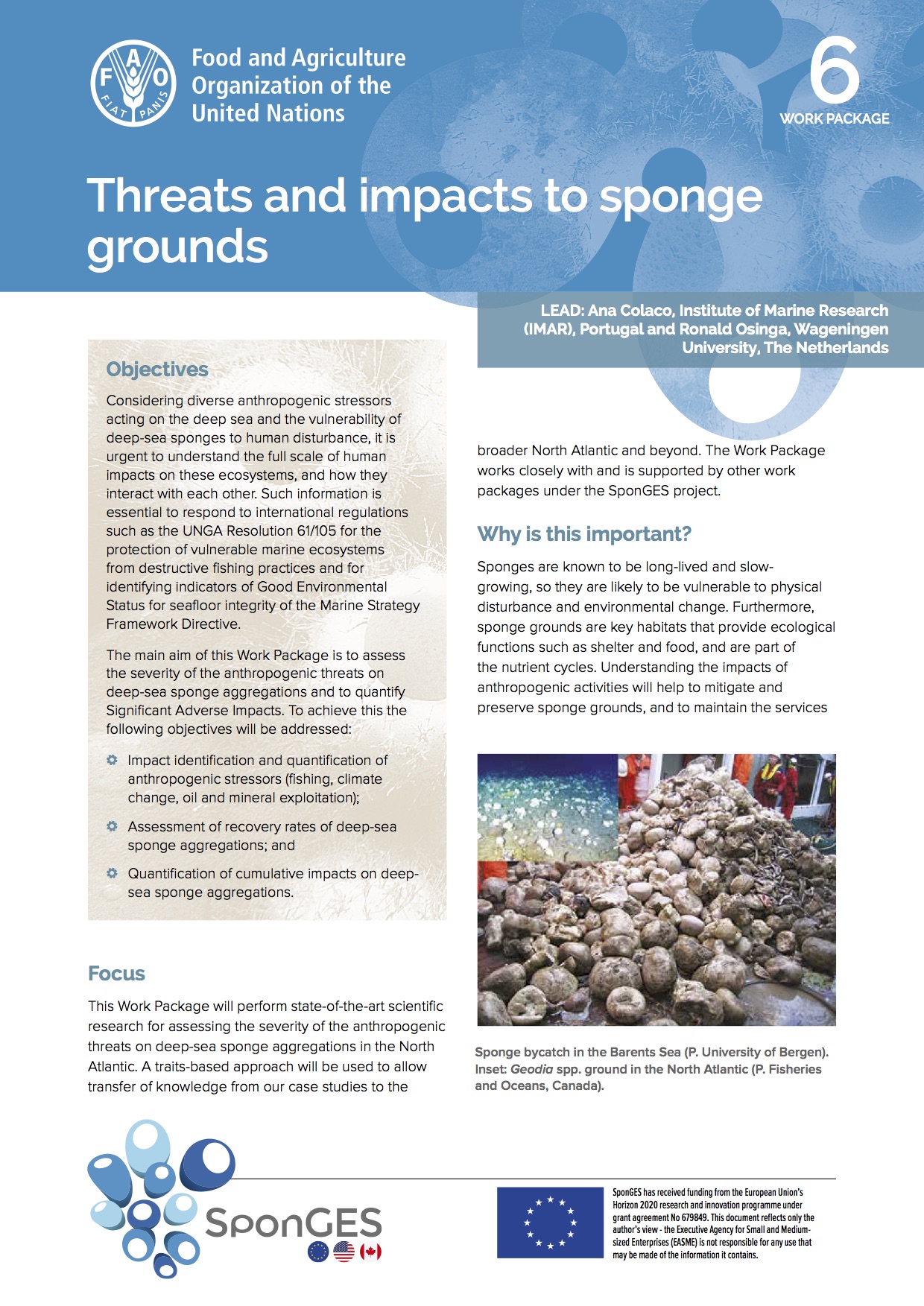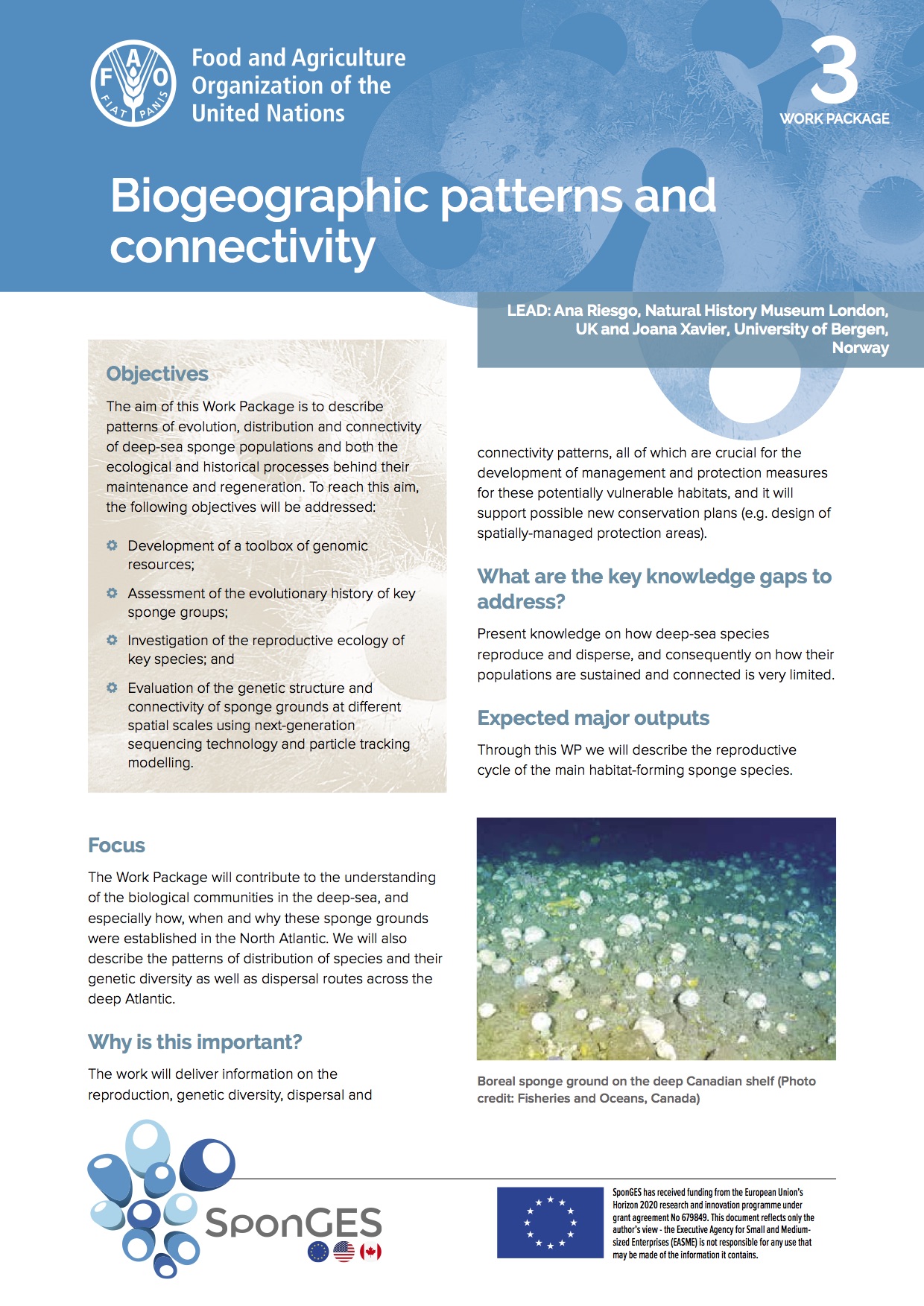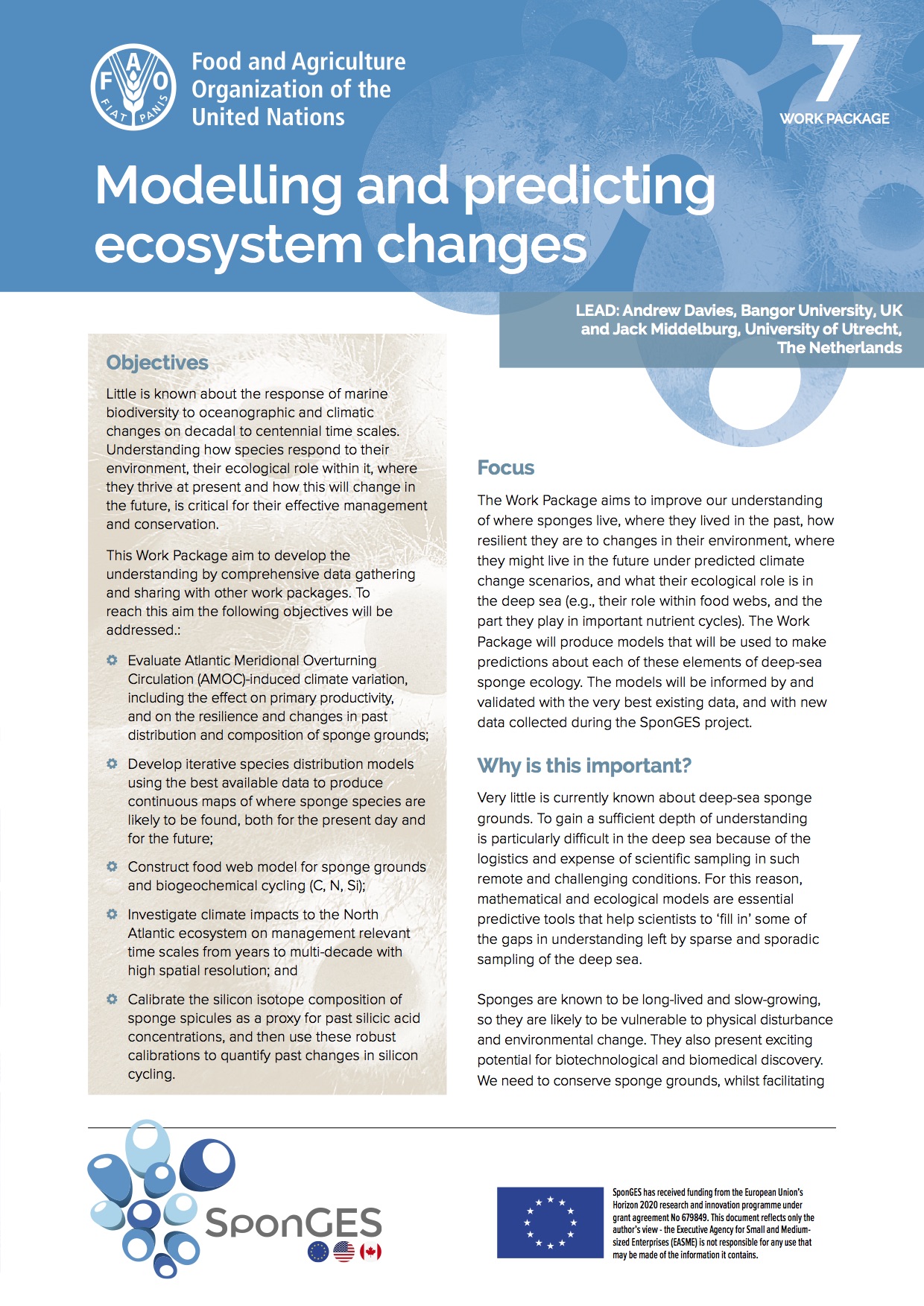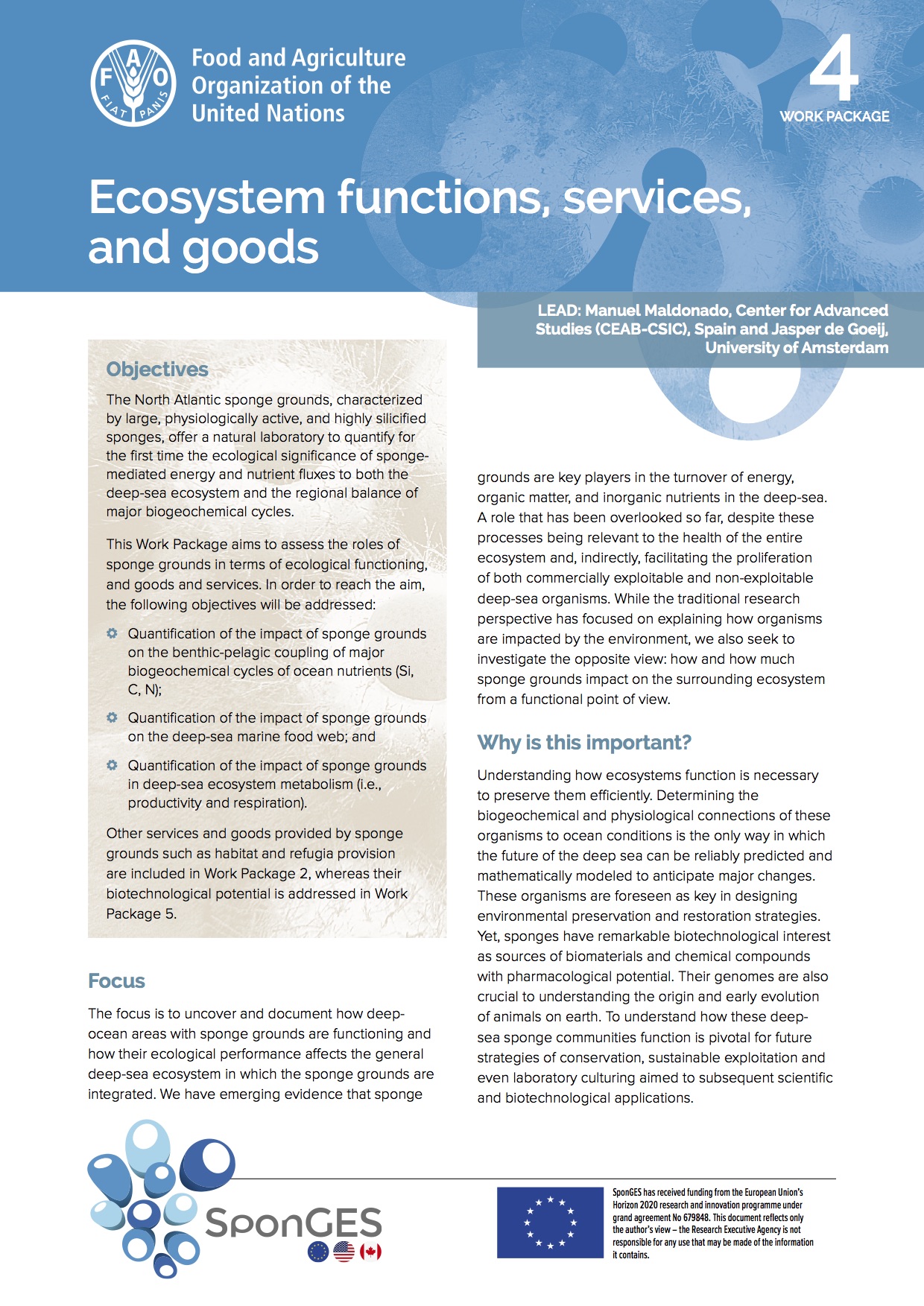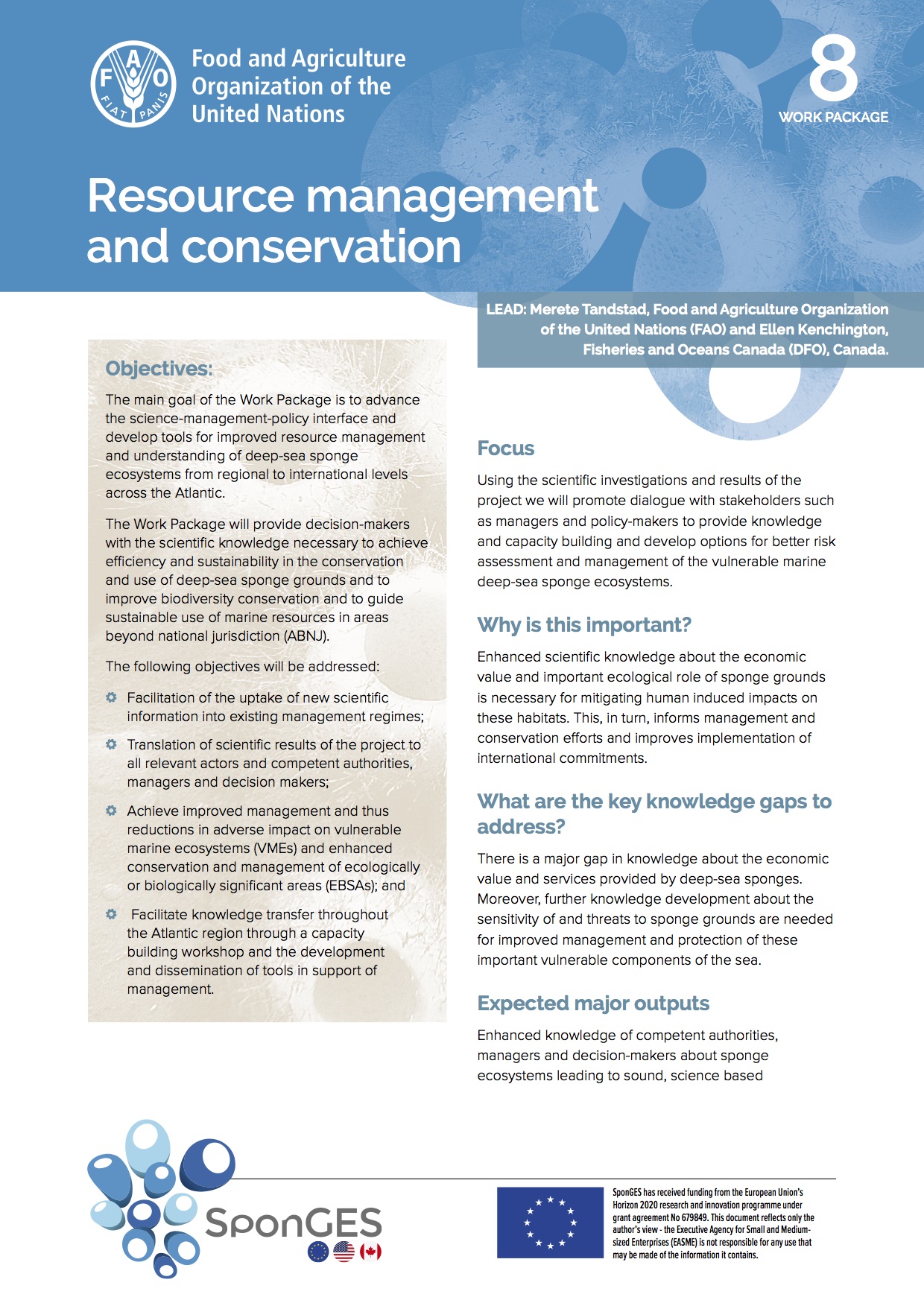SponGES Partner FAO has coordinated the release of 8 fact-sheets describing the rationale of each project Work Package, its relevance to science and society, as well as the results achieved so far. The fact-sheets are archived in the SponGES documents collection in Zenodo (links through text below) and on FAO's website (links through pictures below).
- Fact-sheet 1 - Work Package 1: Ecosystem characterization. The aim of this Work Package is to fill the knowledge gap about the extent and distribution of sponge grounds by collating known distributional data, and by collecting fine scale geological, hydrological, and biological data through in-situ surveys of different types of sponge ground ecosystems in case study areas.
- Fact-sheet 2 - Work Package 2: Biodiversity. The main aim of this Work Package is to provide a complete assessment of the biodiversity contained within sponge grounds ecosystems of the North Atlantic.
- Fact-sheet 3 - Work Package 3: Biogeographic patterns and connectivity. The aim of this Work Package is to describe patterns of evolution, distribution and connectivity of deep-sea sponge populations and both the ecological and historical processes behind their maintenance and regeneration.
- Fact-sheet 4 - Work Package 4: Ecosystem functions, services, and goods. This Work Package aims to assess the roles of sponge grounds in terms of ecological functioning, and goods and services.
- Fact-sheet 5 - Work Package 5: Biotechnological potential. The work package studies deep-sea sponges of the North Atlantic to discover new sponge-derived products and processes with applications in human health, biomaterials, and other industrial applications.
- Fact-sheet 6 - Work Package 6: Threats and impacts to sponge grounds. Considering diverse anthropogenic stressors acting on the deep sea and the vulnerability of deep-sea sponges to human disturbance, it is urgent to understand the full scale of human impacts on these ecosystems, and how they interact with each other. Such information is essential to respond to international regulations such as the UNGA Resolution 61/105 for the protection of vulnerable marine ecosystems from destructive fishing practices and for identifying indicators of Good Environmental Status for seafloor integrity of the Marine Strategy Framework Directive.
- Fact-sheet 7 - Work Package 7: Modelling and predicting ecosystem changes. Little is known about the response of marine biodiversity to oceanographic and climatic changes on decadal to centennial time scales. Understanding how species respond to their environment, their ecological role within it, where they thrive at present and how this will change in the future, is critical for their effective management and conservation.
- Fact-sheet 8 - Work Package 8: Resource management and conservation. The objective of this Work Package is to advance the science-management-policy interface and develop tools for improved resource management and understanding of deep-sea sponge ecosystems from regional to international levels across the Atlantic.
